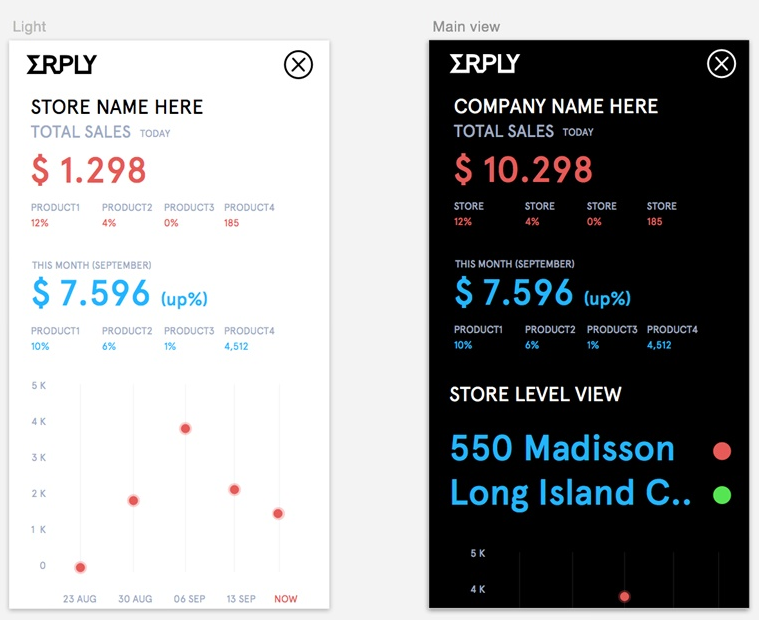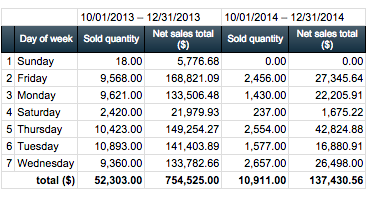
With all the retail software systems, integrated point of sale and inventory around, you're likely tempted to indulge in complicated sales metrics.
Stop now! Or at least postpone it. Consider focusing on just 5 essential retail sales metrics, before your mind is buried in Excel pivot tables or your Qlikview screen overcrowds and freezes. For all an all, it's the real-time overview you need. Your way to glory is keeping real-life events running smoothly in real time, and adjusting your strategy after certain periods.
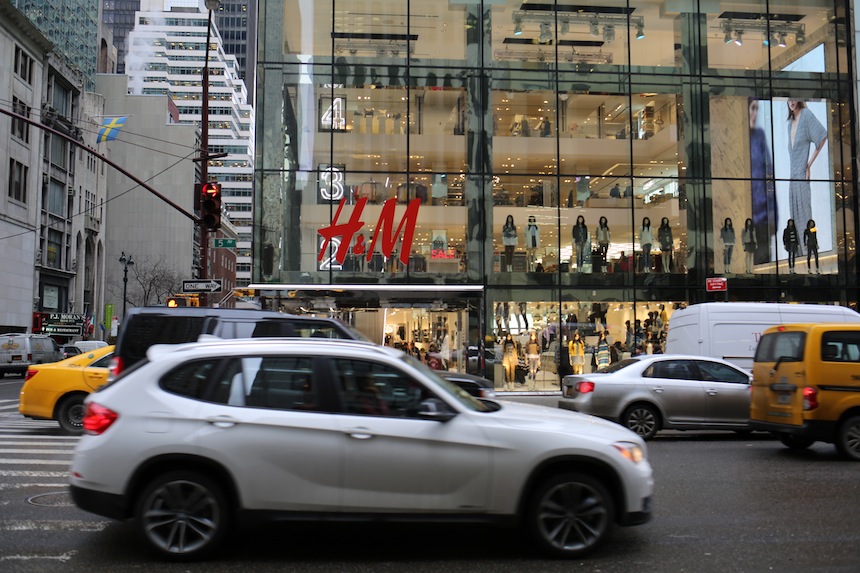
1. Number of Customers (Customer Traffic)
A number of customers are the most straightforward metric for your retail business. Even a child gets that the place that's crowding with customers must be doing good. You normally don't go to an empty restaurant, don't you? Customers are the sole source of money for your retail business. As Karl Marx had it, human work adds real value to land and capital. For a retailer, the more potential customers you get into your shop, the more money they'll likely leave behind. If you're in e-commerce, measuring customer numbers is pretty easy. It does, however, take some experience in reading the analytics. Most probably you'll be using Google Analytics, but don't forget that your e-commerce backend has at least some visitor statistics. Even if these are not as fancy as Google provides, they are typically easy to read and might even be more accurate. Set your benchmarks, compare results to last year and yesterday. In the brick-and-mortar, pay attention to the number of visitors and the number of customers. The latter can be seen from your point of sale history. Use loyalty programs, so your customers identify themselves at the counter, then it's much easier to understand if your retail traffic. Wait! Do you visit your retail stores in person? Visual estimation can be adequate enough. Estimate, before you start counting. NB! A number of customers are the only metric you can grow almost infinitely, i.e. the theoretical limit is the number of inhabitants on Earth. And possibly more, depending on your views on extraterrestrial retail.2. Effectivity (Retail Conversion Rate)
Alright, we already had to distinguish retail visitors and retail customers. Some visitor doesn't buy anything. It's rather unlikely in a big shopping mall, but very common in specialty stores or luxury boutiques. In e-commerce, we're talking about customer conversion ratio. This shows how many visitors a retailer turns into a buyer. It's easy to calculate if you already know your retail customer traffic. Just take the number of retail transactions and divide in with the number of people who visited your store. And multiply by 100, if you want a percentage.
Customer conversion ratio = No of transactions / Customer traffic x 100
The effectivity depends greatly on the type of retail business you're in. If you're selling clothing and apparel in a brick-and-mortar retail store, your likely customer transaction effectivity is 18-25%. This means one out of five customers buys something. If you're lucky, one out of four. It's never 100%. Even ice cream restaurant on a hot day does not convert 100%, as one of your customers have left his wallet at home! If it's brand new luxury cars, the conversion rate is microscopic by nature. According to Industry Retailer, the average conversion rate for e-commerce sites is about 2-3%. Sure it differs from industry to industry, but don’t feel too relieved if you're in that range. To succeed, you need to be better than others. Just use common sense and browse the Internet to find benchmarks suitable to your retail business, i.e. what you're selling.3. Average Sale (Average purchase value)
Alright, now you have two essential retail metrics to watch. Going more in depth, you'll be interested in your average sale value. How money dollars, pound, yen or euros your average customer spends in checkout? How has it changed over time? So you have been working on getting more people into your store, and tried to make them buy each time they visit your store? Calculate the average sale, also called average order value. It's the moment truth in many cases. Even a business with unsophisticated technology can very easily measure the average sale, but surprisingly they don’t. It is measured by dividing the total sales value ($) by the number of transactions. Keep in mind the same customer could initiate multiple transactions; AOV determines sales per order, not sales per customer.Average sales order value = Total sales value / Number of transactions
This is far the most powerful and the most effective measure of the productivity of the sales system. You get more people to your retail store, they do actually buy more often, but the order average is falling? Watch out, you might be pushing the well-paying customer away. More visitors means more hassle, you need more sales associates and your store might become too crowded. On the other hand, it can be just about OK if the average sale order value is not growing. In many retail businesses, it is not possible to sell more expensive stuff or buy more at the time.
The average purchasing power of the society does have limits, and so does the rationally acceptable price level. You cannot charge 1000 bucks for a T-shirt. So sometimes the only thing you can do, is to get more customers and more transactions, even if the average value of a purchase is falling.
4. Items per purchase (Size of an average shopping cart)
In the retail business, especially brick-and-mortar outlet, a sold item more roughly estimates for added revenue. It also brings along handling costs like inventory carrying costs, transaction time and salary of sales associates, needs for retail space. Your point of sale system should be capable of providing you with pretty exact data. If your transaction volumes are low, the number of items may seem insignificant, like a carton of milk equal to an iPad sold. When the sales volumes are higher, it starts making much more sense. If your retail business keeps up good averages per purchase, but the number of items is rising, it means people are buying cheaper products in bulk. Check your sales offers, maybe you're overdoing something? Come next month, and nobody buys soap and shampoos anymore because your customers now have large stock at home. In general, terms, if your average purchases are going up, the item count rises, too. But it would be better if the item count is slower to rise than the sales value average. For the end of the day, you want to sell for more money, not just sell more.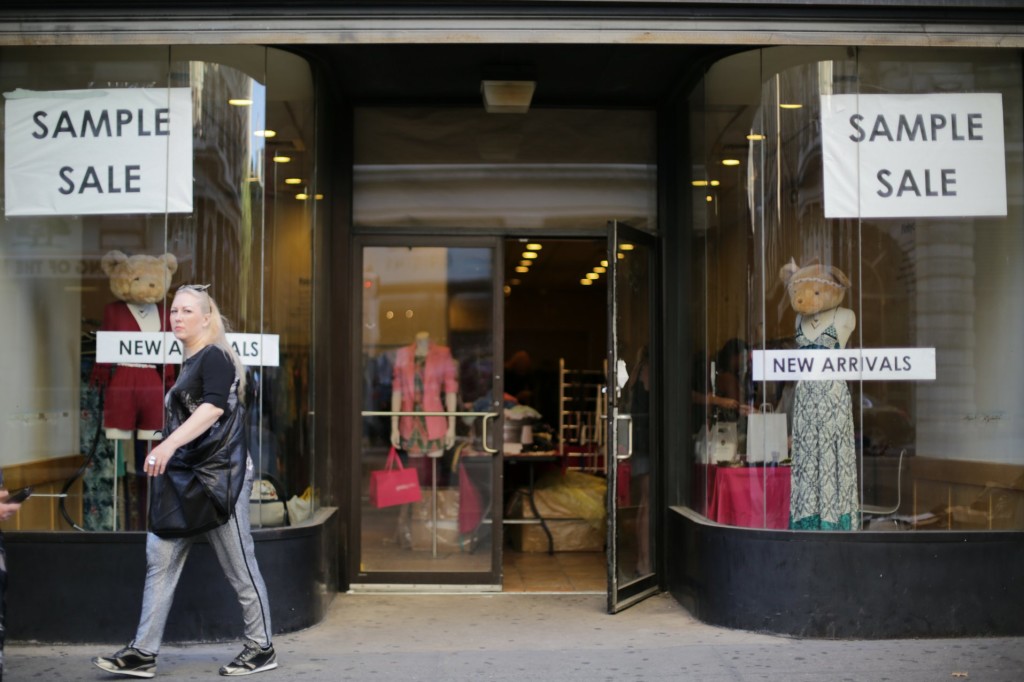 Don't worry if average shopping cart has more items in it. In most cases, bigger is better. Use common sense to assess the situation. You could aim for more items in a shopping cart with 2=3 marketing campaigns. But there are always limits. For example, it is very hard to force your customers into buying more than one suit at the time. So if you're selling suits, anything over 1 item per cart is for the better. No to mention brick-and-mortar, where shopping carts have physical limits.
Don't worry if average shopping cart has more items in it. In most cases, bigger is better. Use common sense to assess the situation. You could aim for more items in a shopping cart with 2=3 marketing campaigns. But there are always limits. For example, it is very hard to force your customers into buying more than one suit at the time. So if you're selling suits, anything over 1 item per cart is for the better. No to mention brick-and-mortar, where shopping carts have physical limits.5. Gross margin (Sales profit before costs)
Gross margin is the difference between revenue and cost before accounting for certain other costs. Generally, it is calculated as the selling price of an item, less the cost of goods sold. It's rather basic math for business to know how much it took you to acquire or produce the thing you're selling.Product price when sold = Product acquiring or making price + Gross margin
Gross margin is what a business lives on. This has to cover all the costs of selling and production, including salaries, taxes, rent, transport, and any other costs. If your business has debts to pay, these also must be covered by the margin, otherwise, it's impossible to survive. Rule of thumb is to set the gross margin high enough so you have plenty of room to cut back. Even a successful retail business will have some goods that are harder to sell. These must be discounted.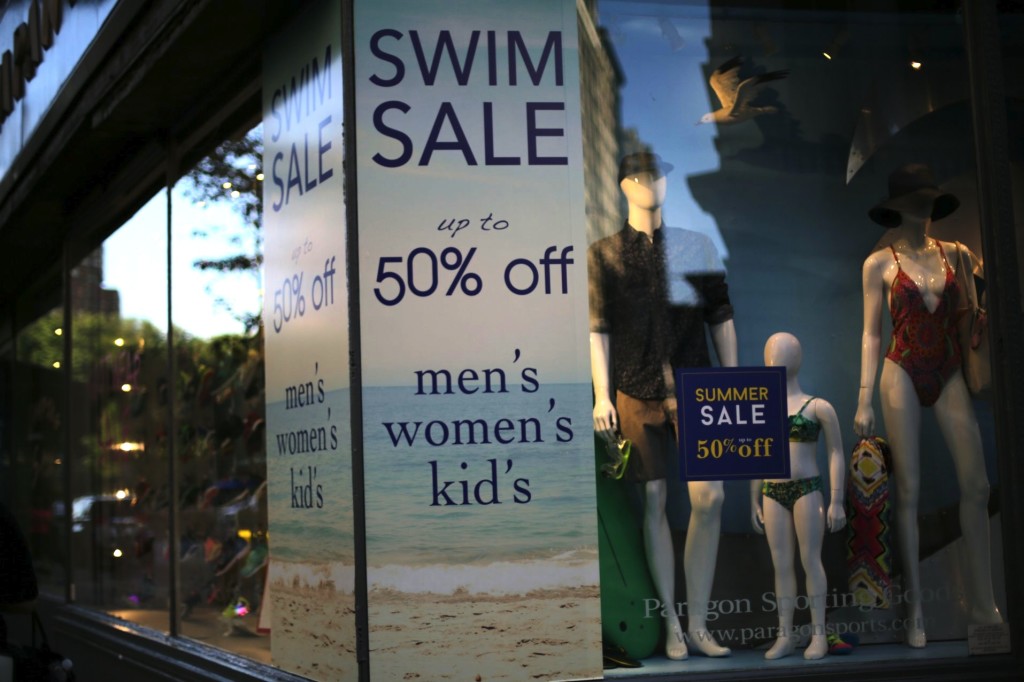
In fact, nowadays customers are so spoilt that they expect -50% or even -70% discounts.In most cases, the lower the margins more items you sell and the more conversions you have. Some retailers are decidedly low margin. Costco, Wal-Mart set their margins as low are 10-20% range. A retailer must have hundreds of thousands, possibly millions of customers for that. Clothing and apparel retailers get 30-50% gross margin, and this is minus the discounts! The smaller the business and the fewer items there are sold, the higher the margin. Specialty stores have to keep up 100-500%, and it's not about greed but space, employees, and client per item sold demand higher margin.
NB! Do not confuse gross margin and sales markup. Markup is what a retailer adds in first place, resulting in the full price. A retailer can calculate actual gross margin only when the item is sold. Gross margin is always lower than initial markup.Competition and suppliers eat your margins, so you cannot push it much higher than the industry average, and cannot survive if it's much lower than that. Always know where you are with a particular product and discount. Use your enterprise resource planning (retail ERP) to keep an eye on the gross margin. Often it's also the only thing the owners of a retail chain or store really care about. If you're doing well, the retail business will have some money left when stuff is sold and all the costs are deducted. This gross profit. Normally it's several times less than gross margin. As a definition puts it, gross profit is a company's residual profit after selling a product or service, deducting the cost associated with its production and sale.
Gross profit = Revenue per item - Cost of items and selling process
Want to compare the gross margin and gross profit per product? It's pretty hard to calculate how much time and space you spend on a particular product, so just count your costs and divide by the number of items sold. This is what most of the retailers do, even though advanced enterprise management software can be customized to calculate the item's dimension, stocking time and much more. Get good software that allows this in future.Conclusions
There are plenty more indicators a retail business owner and manager can monitor. Erply is working in close cooperation with many large retail companies, including multinationals, and what we see is that successful management keeps day-to-day watch on a limited set of retail metrics.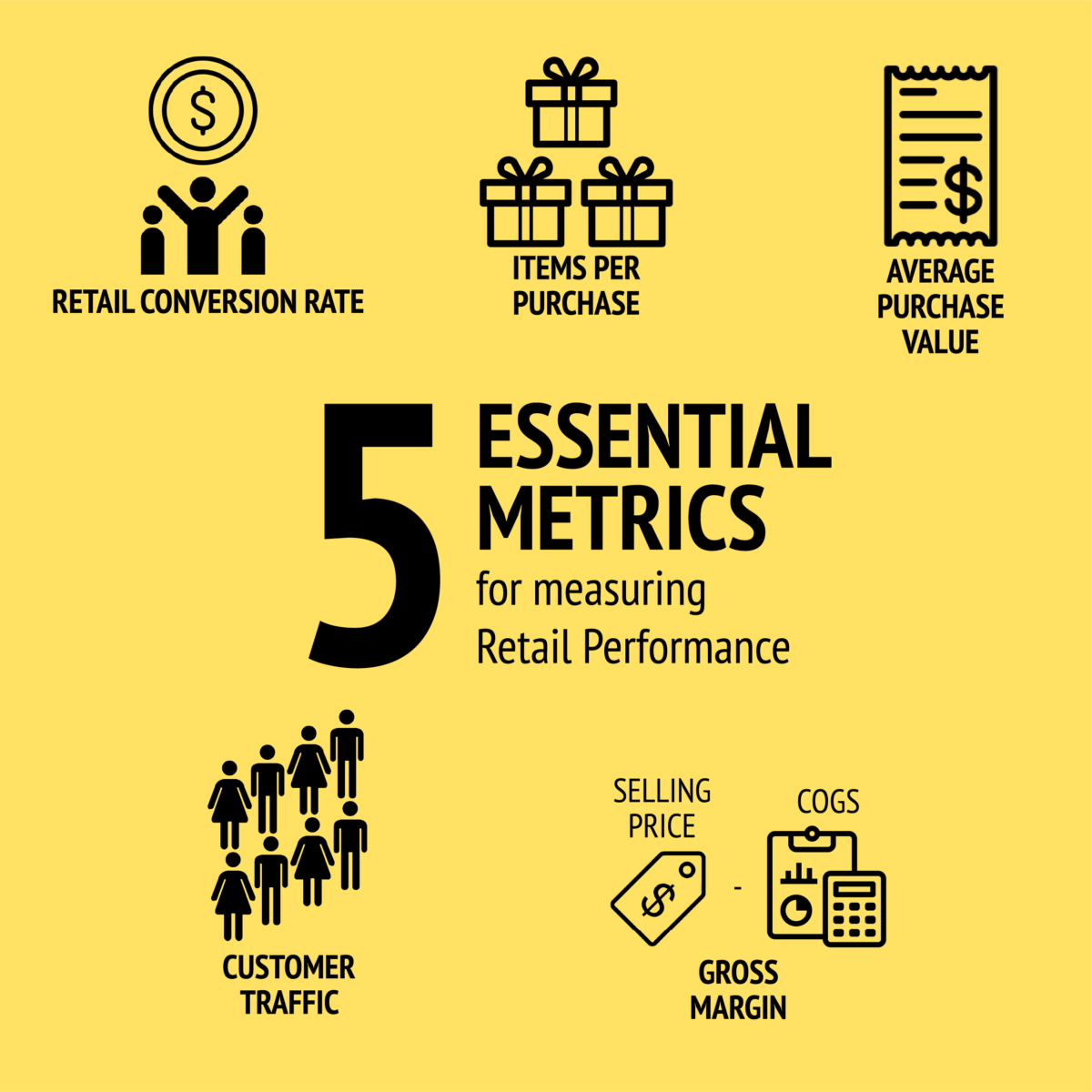
An enterprise retail management suite provides practically infinite possibilities to build custom retail statistics.
May we suggest you first get familiar with the essentials, and then work out specific indicators, relevant to your retail business, and compare your result to internal and industry benchmarks.
Erply offers real-time access to retail KPIs right on your mobile phone.
